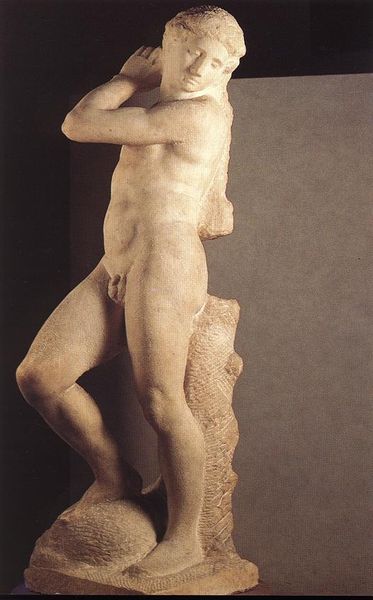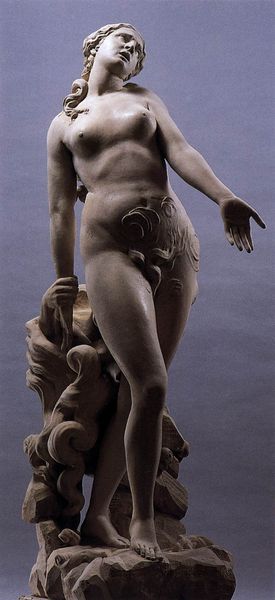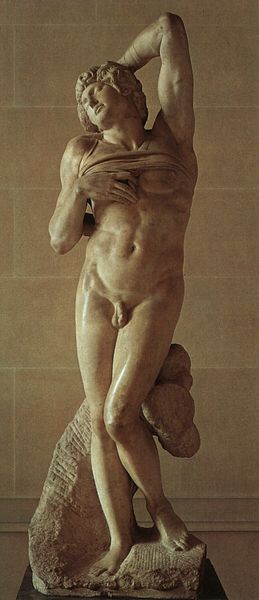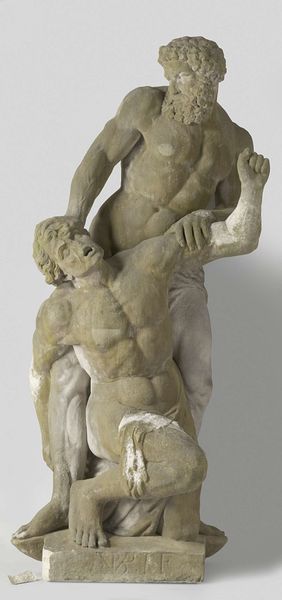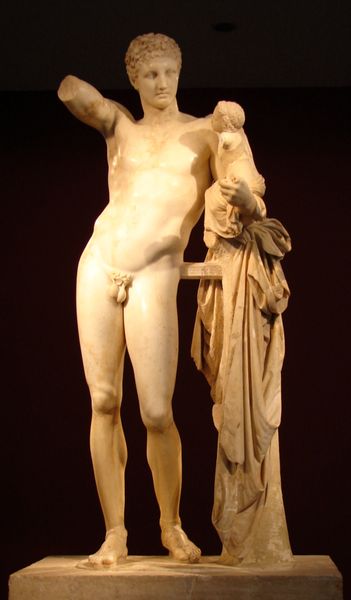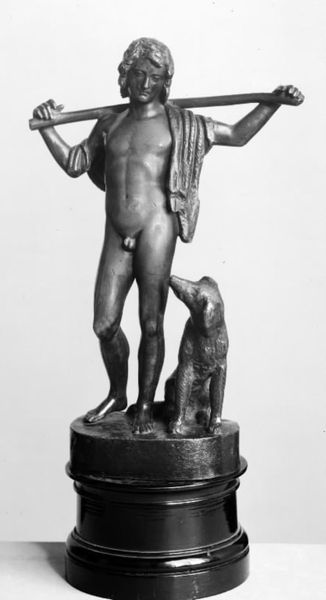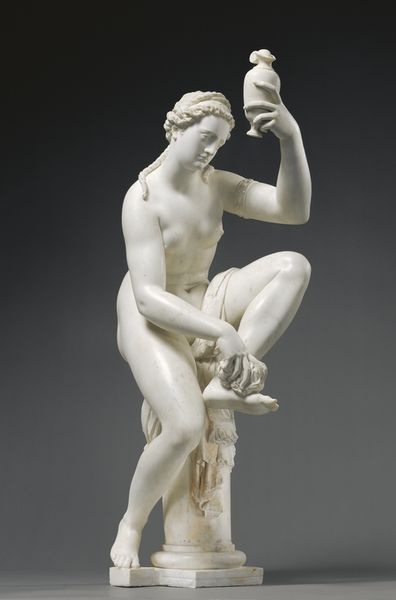
carving, sculpture, marble
#
statue
#
carving
#
sculpture
#
classical-realism
#
sculptural image
#
figuration
#
11_renaissance
#
roman-mythology
#
sculpture
#
mythology
#
history-painting
#
marble
#
italian-renaissance
#
nude
#
statue
Copyright: Public domain
This marble sculpture of Bacchus was made in Florence by Michelangelo. The sensuous and androgynous figure of the Roman god of wine challenges the traditional representations of masculinity. Commissioned by a cardinal, but rejected for being overtly pagan, the sculpture speaks to the complex dynamics of the Renaissance, caught between religious conservatism and a revival of classical antiquity. Michelangelo has depicted Bacchus as unsteady on his feet, his eyes glazed, seemingly lost in a drunken stupor. The figure is accompanied by a satyr, who gleefully eats grapes. The imagery serves as a commentary on the intoxicating allure of pleasure and the loss of control it entails. Michelangelo infuses Bacchus with a palpable vulnerability. Instead of a celebration of godlike power, we witness a poignant, humanized portrayal of intoxication and its discontents.
Comments
No comments
Be the first to comment and join the conversation on the ultimate creative platform.

